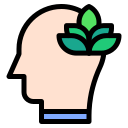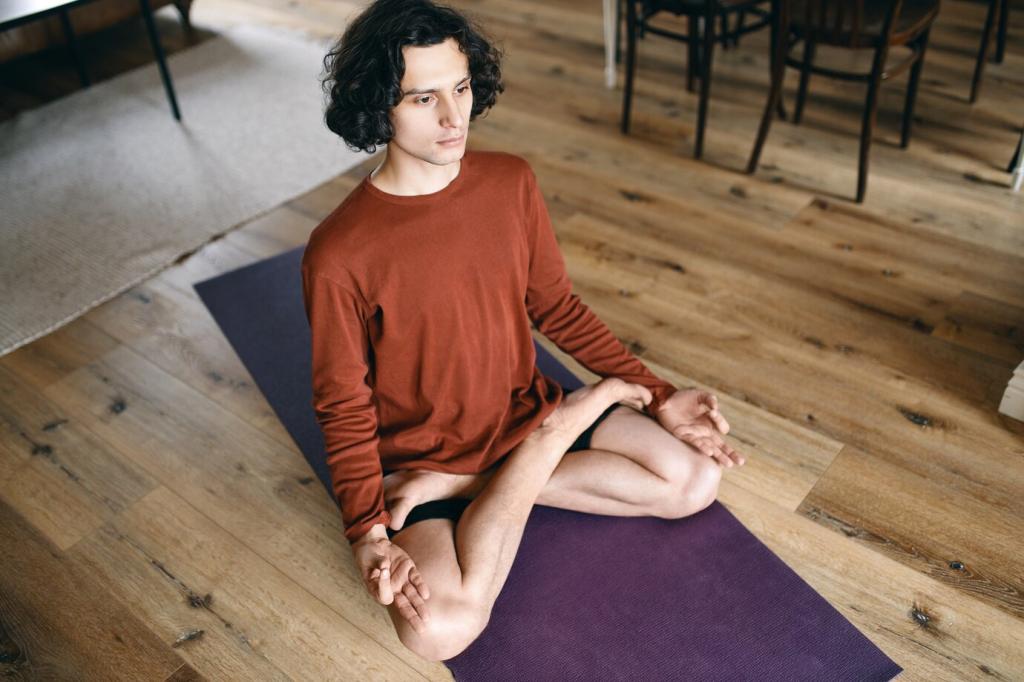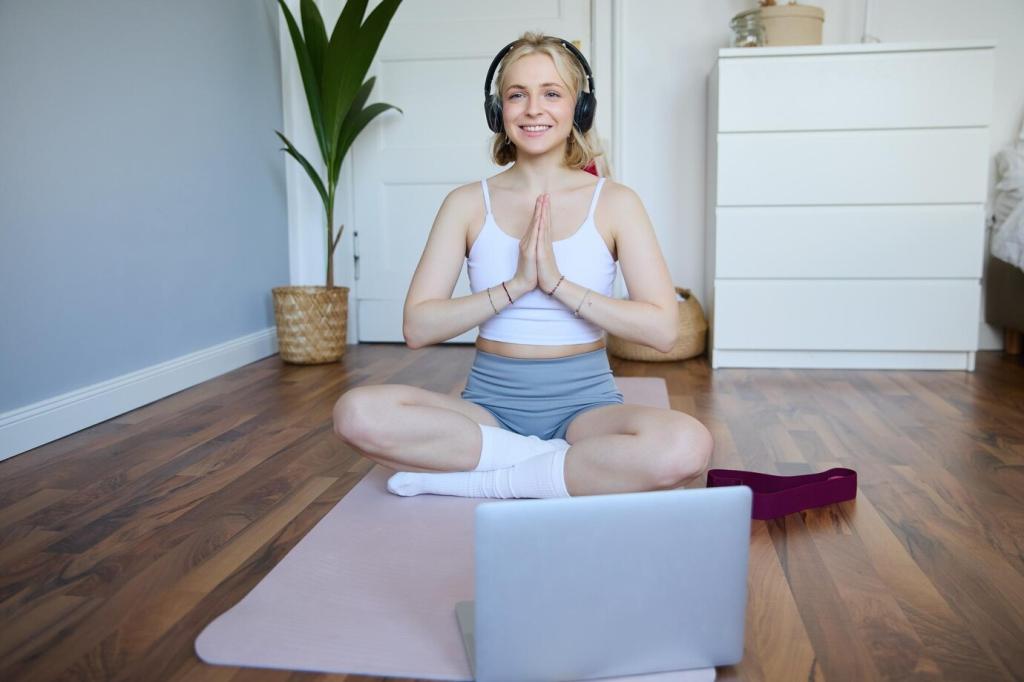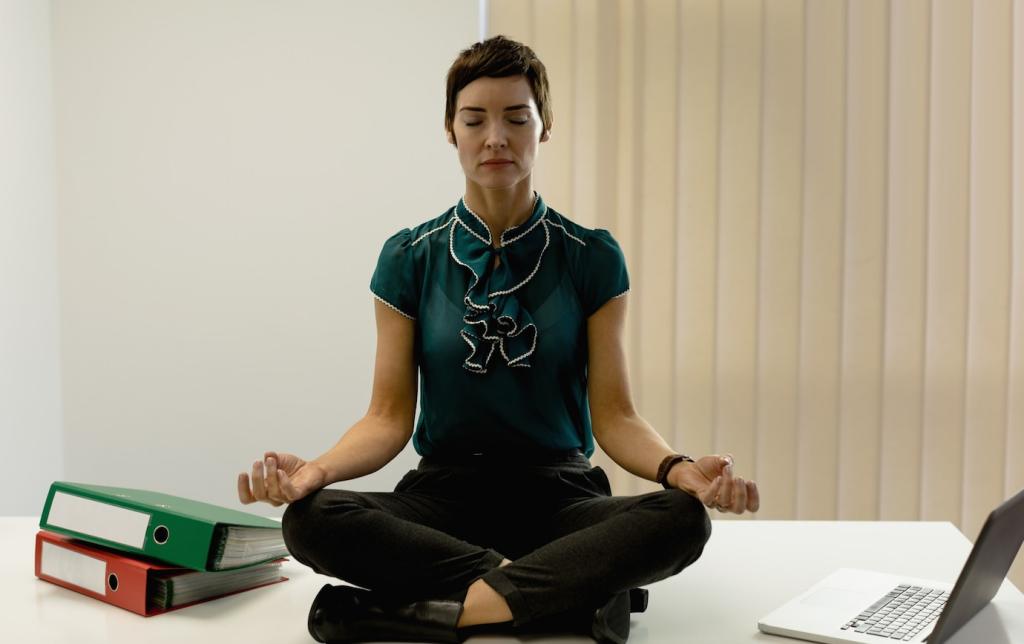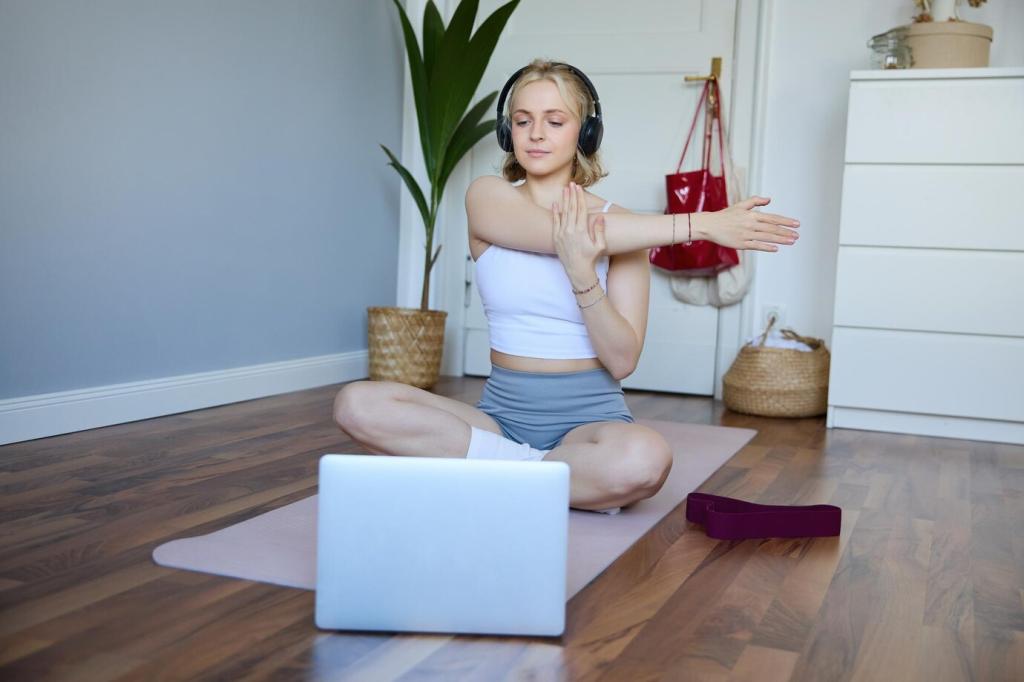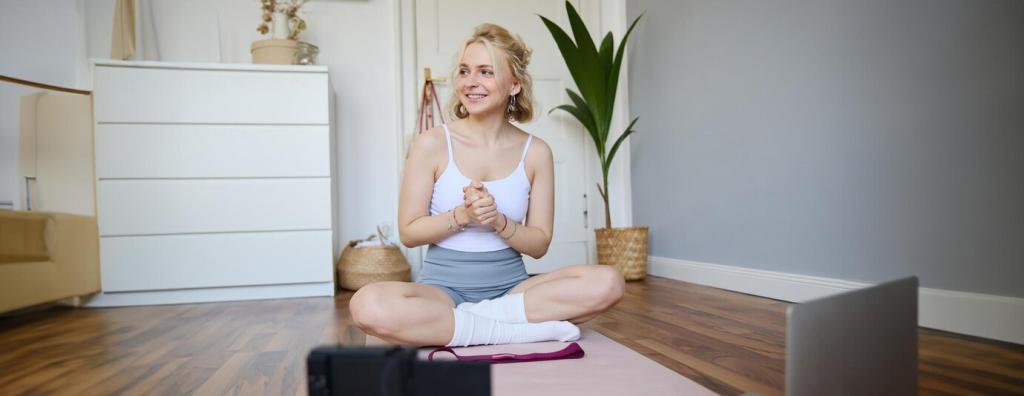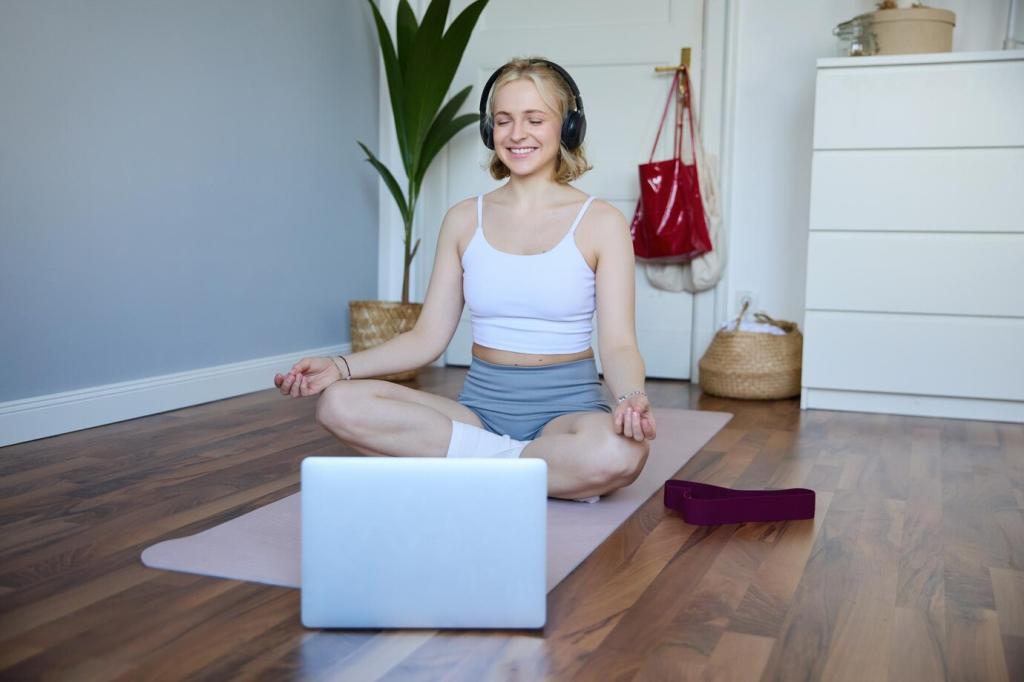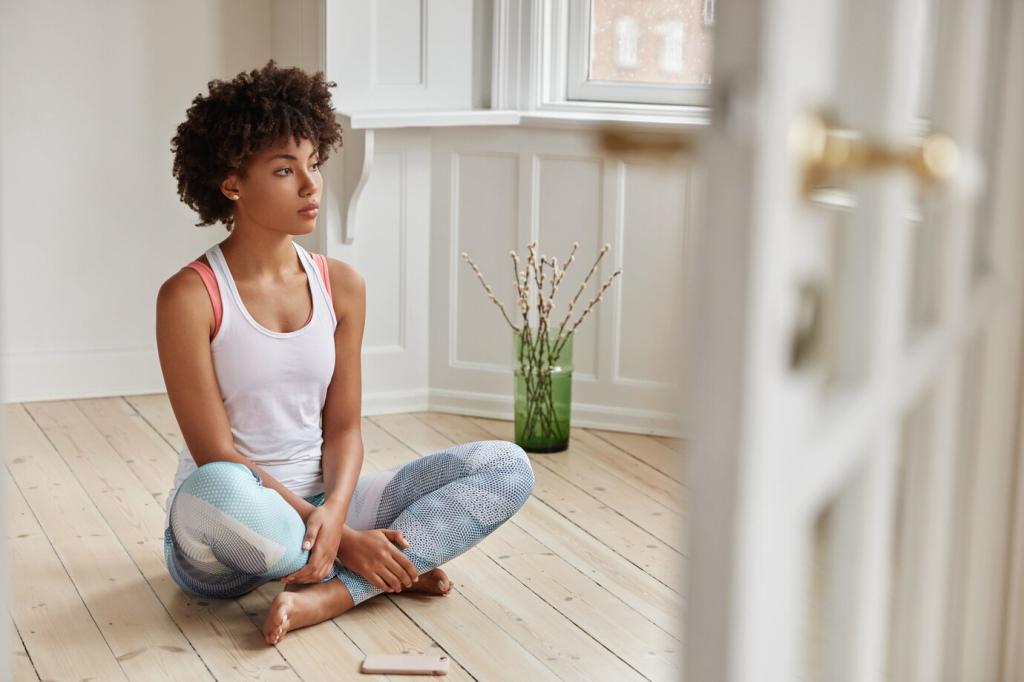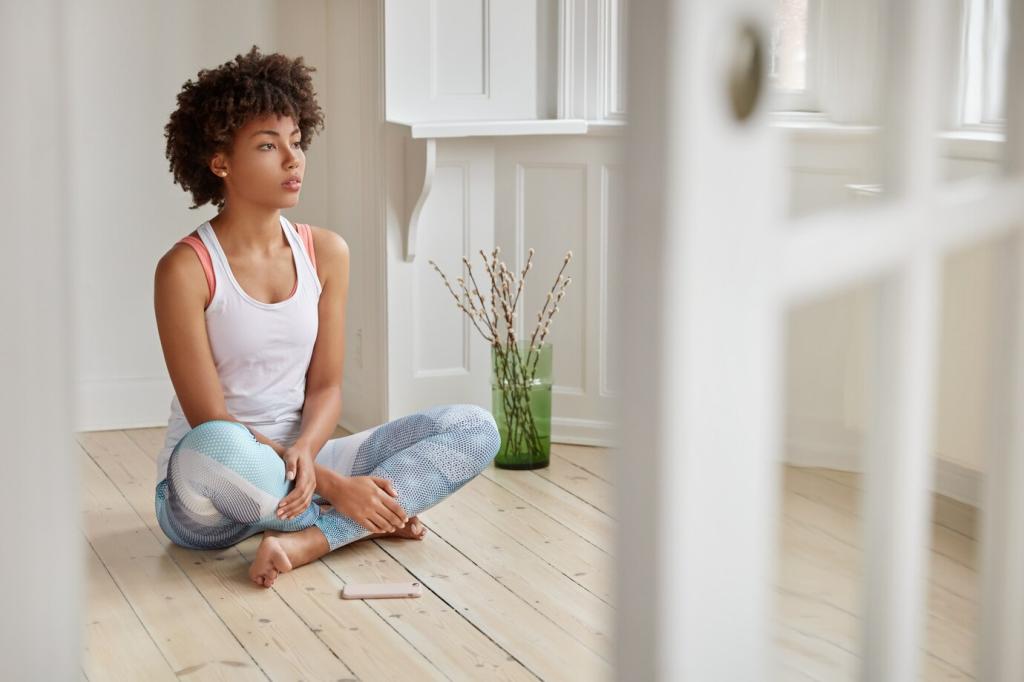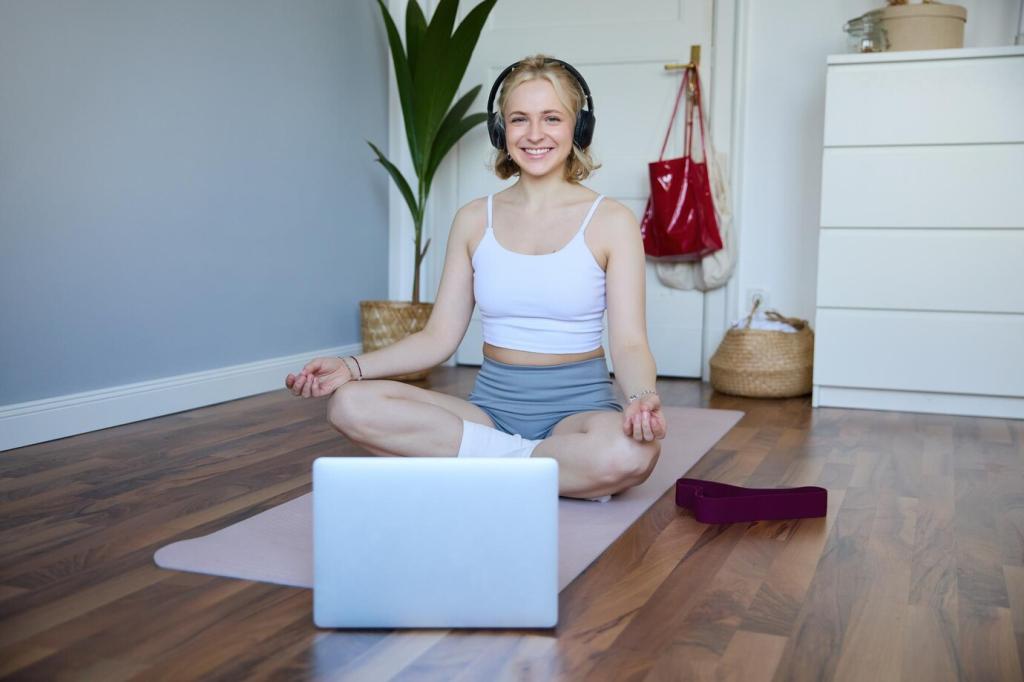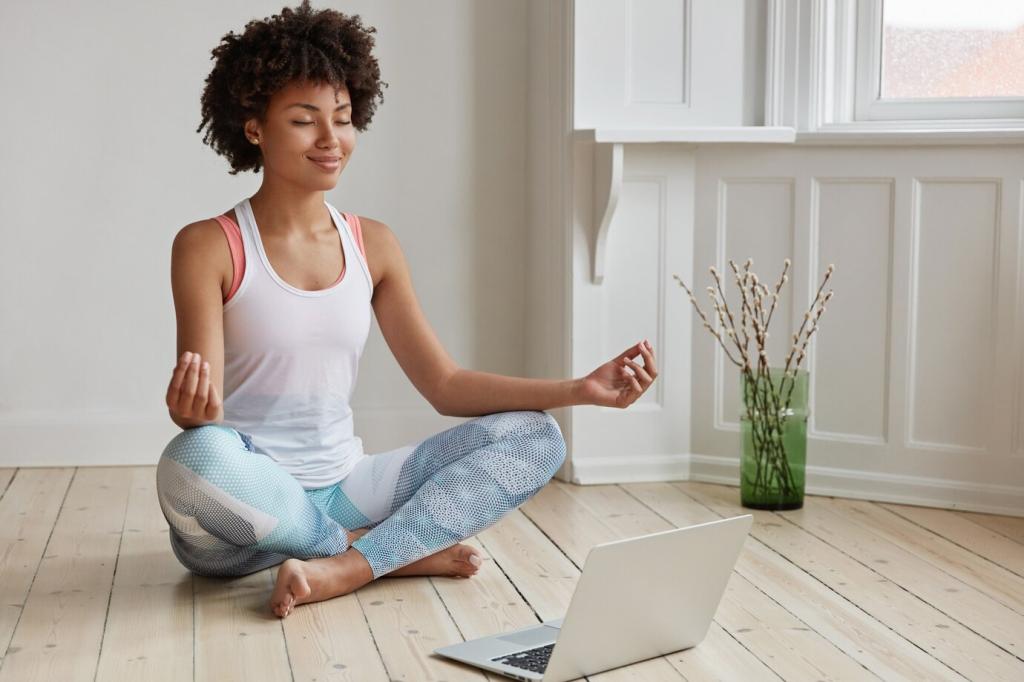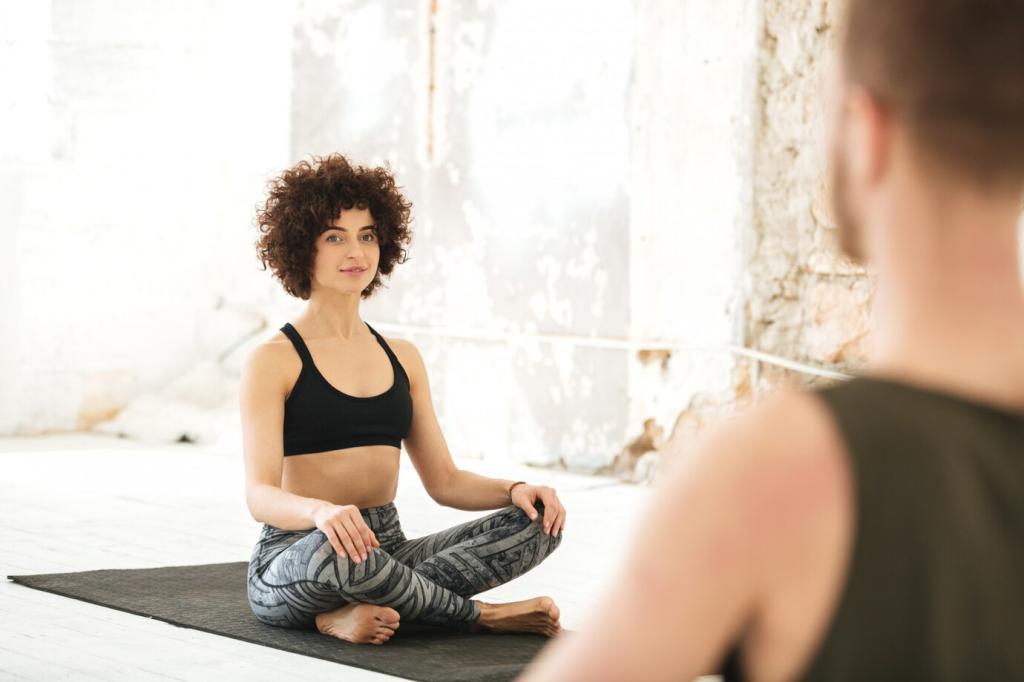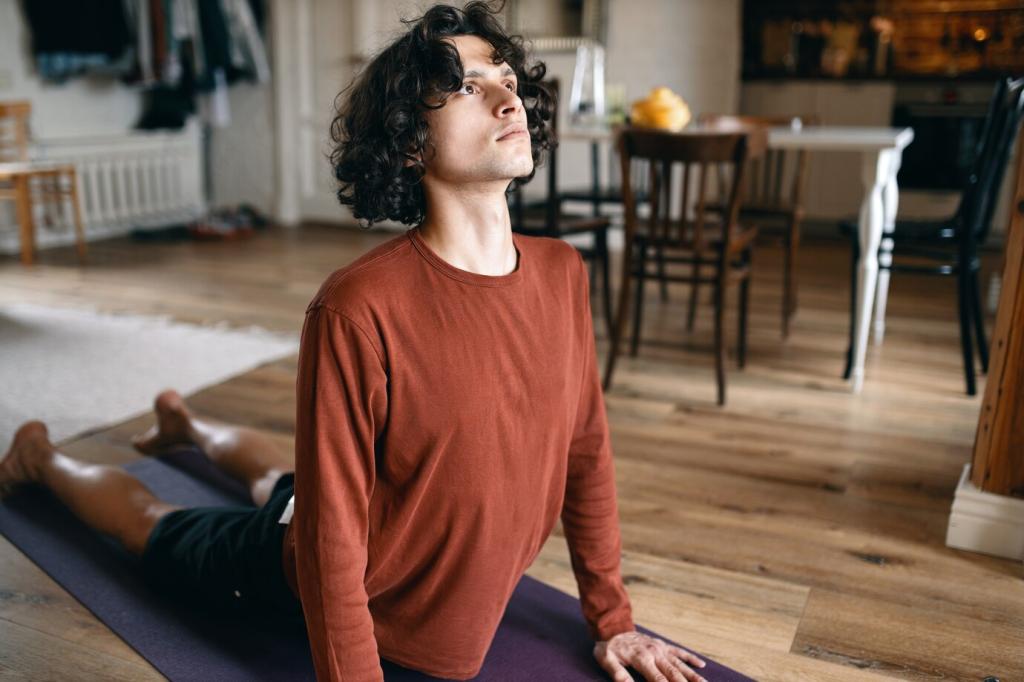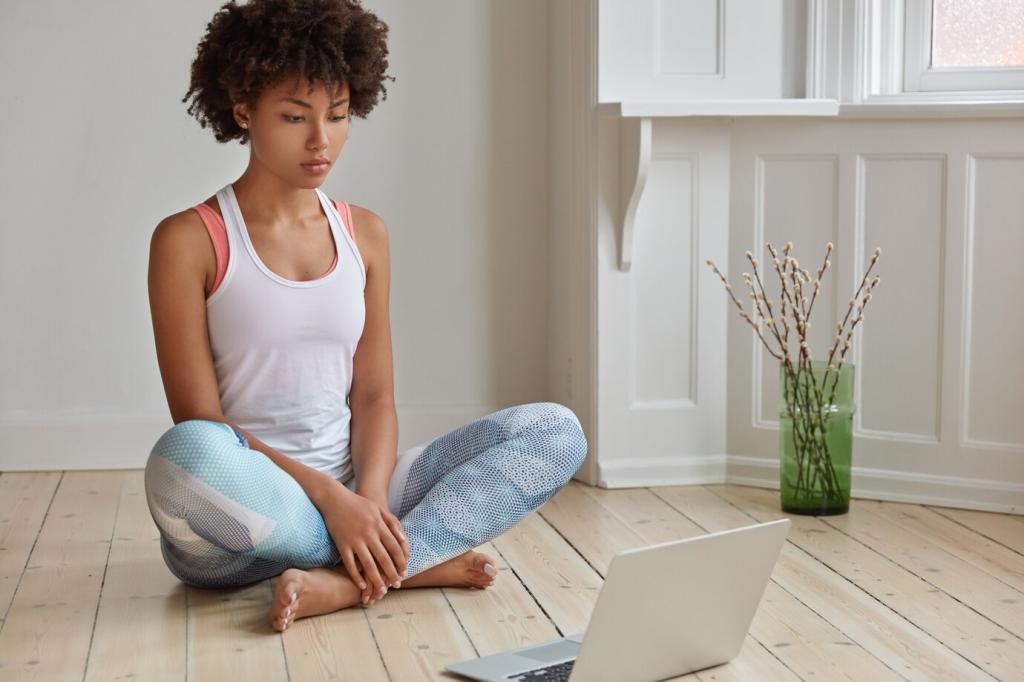Simple Beginner-Friendly Techniques
Inhale for four, hold for four, exhale for four, hold for four. Keep shoulders soft and jaw relaxed. If holding feels tight, shorten counts. This method steadies attention quickly during stress. Practice three rounds before meetings, and comment with where you felt the most ease in your body today.
Simple Beginner-Friendly Techniques
Gently sweep attention from crown to forehead, jaw, neck, shoulders, arms, chest, belly, hips, legs, and feet. Notice warmth, tingles, or tension without chasing them away. Soft awareness often melts micro-strain. End by thanking your body. Share the area that surprised you most and any release you noticed.
